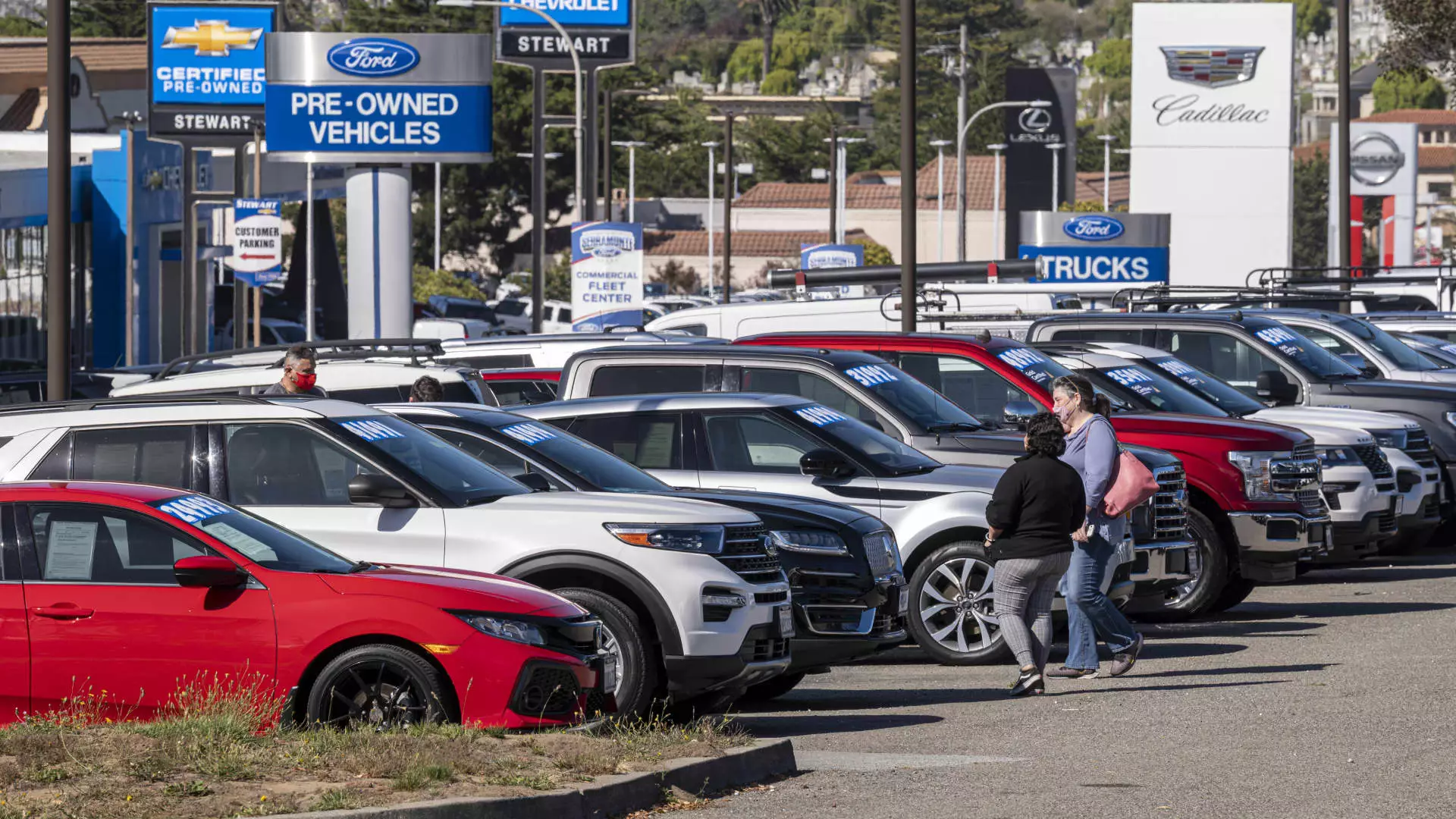Car owners have been experiencing a significant financial burden in recent years due to the combination of high car prices and interest rates. According to industry experts, the average monthly car payment reached $760 as of May, marking a steep rise from the $535 average payment in May 2019. This represents a roughly 40% increase in just a few years, making it increasingly challenging for consumers to afford their vehicles.
One of the major issues plaguing car owners is the negative equity crisis. Many customers who purchased vehicles at inflated prices during the Covid-19 pandemic are now finding themselves “underwater” on their loans. This means that the amount they owe on their car is higher than the car’s current market value. In the first quarter of 2024, 23% of customers with trade-ins had negative equity of more than $6,167 on average, creating a concerning financial situation for many consumers.
The steep drop in used-car prices has resulted in unusually high rates of depreciation for many vehicles. While it is common for car owners to have some negative equity when trading in a vehicle, the current levels of negative equity are alarming. Trading in a vehicle with negative equity often leads to consumers rolling over the balance into a new loan, increasing their monthly payments and interest rates. This cycle of debt can have long-lasting financial implications for consumers.
Impact of Incentives
Despite the challenges faced by car owners, there is some good news in the form of rising incentives. Incentives have increased by 81% over the past year, offering consumers some relief in the form of discounts, low interest rates, and trade-in allowances. However, the impact of these incentives may be short-lived, as structural changes in the auto market are expected to keep prices and payments high for the foreseeable future.
One of the key factors contributing to high car payments is the uncertainty surrounding interest rates. While the Federal Reserve plays a role in influencing interest rates, the timing of rate changes and their impact on auto loan rates remain unclear. Inflation, along with other market forces, continues to push vehicle prices higher, further complicating the financial landscape for consumers. Real relief in interest rates may not come until well after this year, prolonging the financial strain on car owners.
The rising cost of car ownership is a significant financial challenge for many consumers. With high prices, negative equity, and uncertain interest rates, car owners are facing a complex and daunting financial landscape. While incentives provide some temporary relief, the long-term outlook for car payments remains uncertain. It is crucial for consumers to carefully consider their financial options when purchasing a vehicle to avoid falling into a cycle of debt and financial hardship.

Leave a Reply